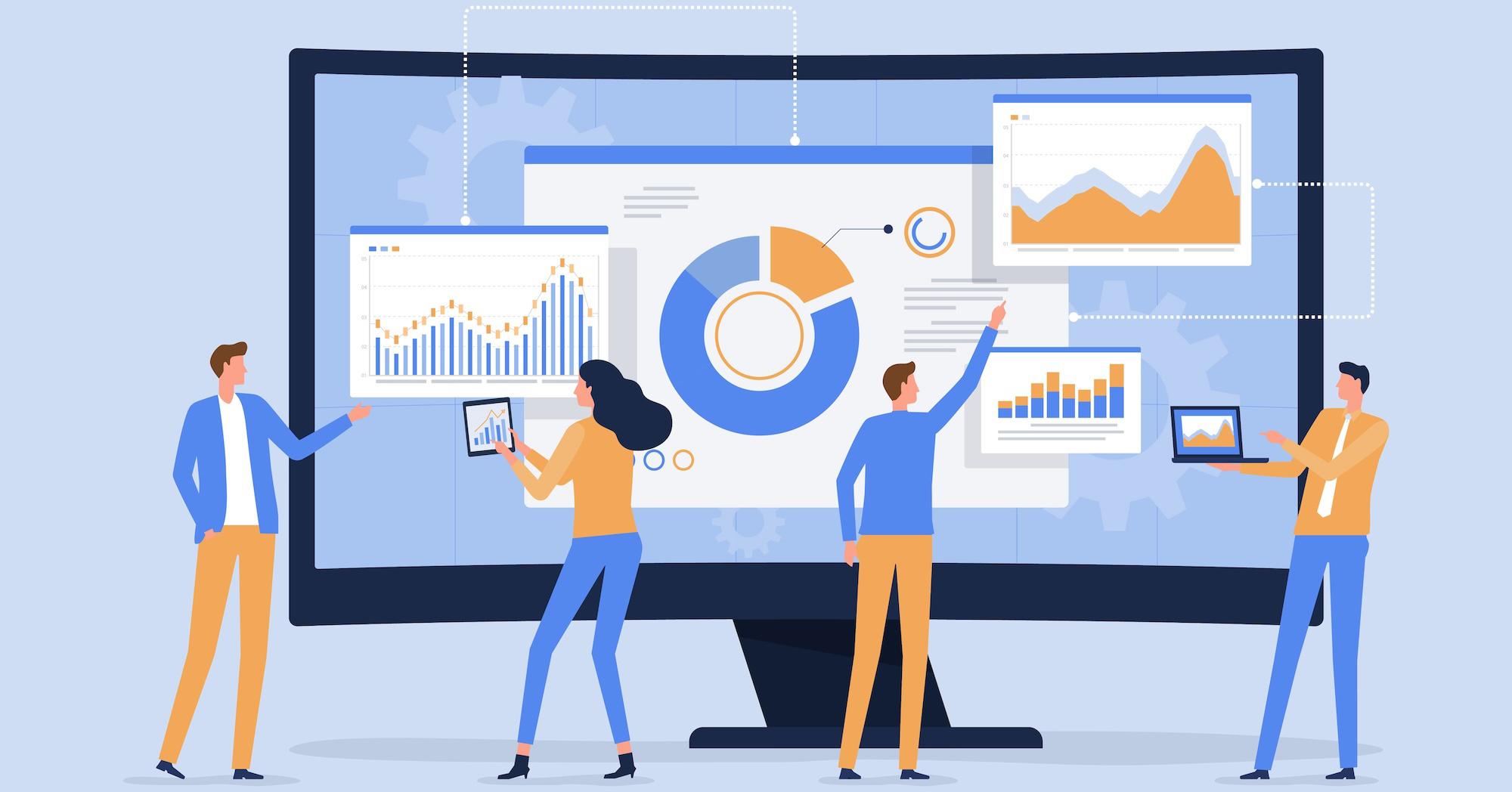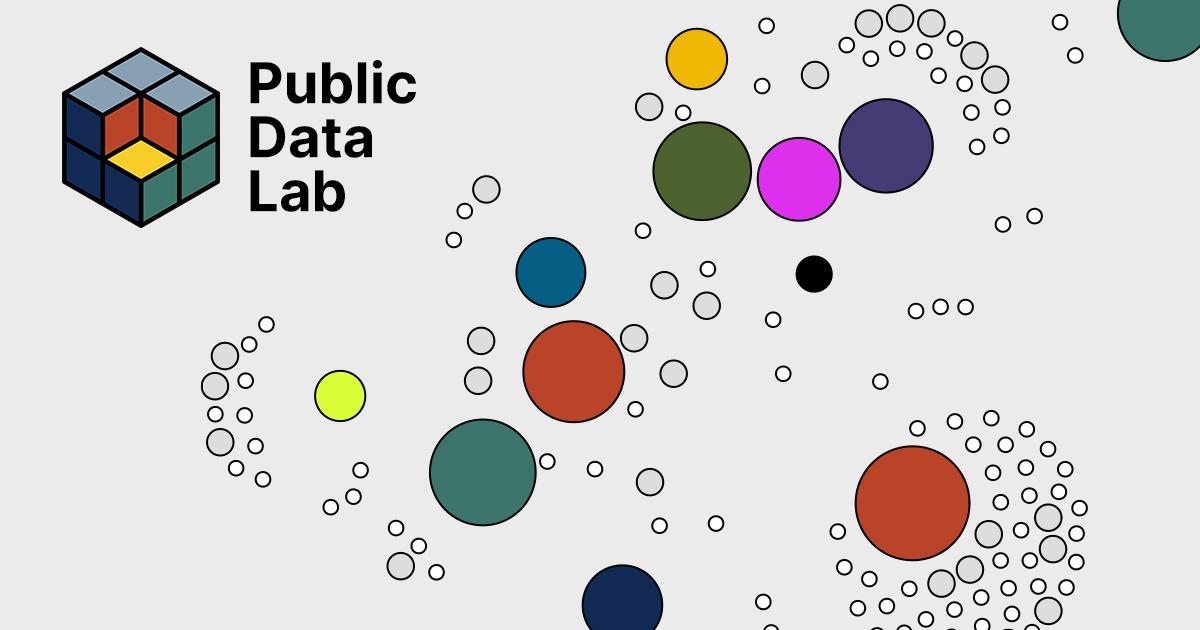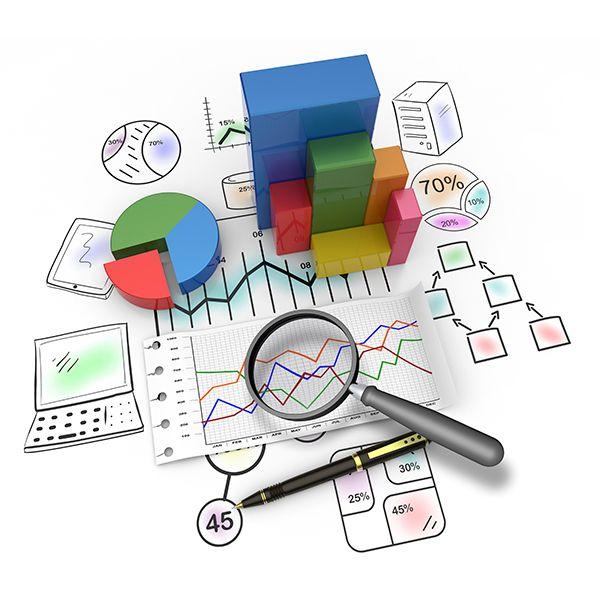In today’s data-driven world, the treasure trove of public data is often overlooked by B2B marketers, but what if I told you that this untapped resource could be the secret ingredient to elevating your marketing strategy? Imagine having access to a wealth of information just waiting to be mined—insights that could help you identify your ideal customers, refine your messaging, and even outsmart your competition. Public data is more than just numbers and statistics; it’s a goldmine of opportunities that can transform the way you connect with other businesses. In this article, we’ll explore how you can dig deep into public records, social media insights, and government databases to uncover actionable intelligence that will propel your marketing efforts to new heights. So, grab your virtual pickaxe, and let’s dive into the world of public data and discover the gems that lie within!
Unlocking the Power of Public Data for B2B Marketing Success
In the ever-evolving landscape of B2B marketing, leveraging public data can provide a significant competitive edge. With a myriad of information at our fingertips—from government databases to industry reports—marketers can transform raw data into actionable insights that drive business growth. Here’s how to make the most of these valuable resources:
- Identify Target Markets: Use public datasets to analyze demographics, industry trends, and economic indicators. This can help in pinpointing potential clients and tailoring your marketing strategies accordingly.
- Enhance Customer Profiles: Public records can enrich your understanding of existing customers. Data such as company size, revenue, and employee count can aid in segmenting your audience more effectively.
- Monitor Competitors: Keep an eye on competitors’ activities by utilizing data from public filings and market analyses. Understanding their strategies can inform your own and uncover new opportunities.
Moreover, public data not only supports marketing strategies but also enhances decision-making processes. By analyzing historical trends and economic shifts, B2B marketers can forecast future needs and align their offerings accordingly. This proactive approach allows for:
- Data-Driven Campaigns: Create marketing campaigns rooted in factual information rather than assumptions. This not only improves engagement but also builds trust with potential clients.
- Improved ROI: Leveraging public data can optimize marketing spend by focusing on high-potential segments, reducing wasteful expenditures on less effective strategies.
To fully unlock the potential of public data, consider utilizing tools that aggregate and analyze this information. Here’s a brief overview of some effective tools:
| Tool | Functionality | Best For |
|---|---|---|
| Google Trends | Analyze search trends and consumer interest | Identifying current market demands |
| Data.gov | Access a plethora of government datasets | Understanding economic and demographic shifts |
| LinkedIn Sales Navigator | Find and connect with decision-makers | Targeted outreach and relationship building |
integrating public data into your B2B marketing strategy is not just a trend—it’s a fundamental shift toward smarter, data-driven decision-making. By embracing these resources, you can unlock insights that lead to effective strategies and ultimately, greater success. Remember, the true gold lies not just in the data itself but in your ability to interpret and utilize it creatively.
Understanding the Treasure Trove: What Public Data Really Offers
When it comes to navigating the vast ocean of data available online, B2B marketers often find themselves staring at a treasure map with no clear path to the gold. Public data, often overlooked, is a rich source of insights that can illuminate the way forward. By understanding what this data offers, marketers can unlock opportunities that drive engagement and conversions.
First and foremost, public data provides a plethora of information about potential customers, industry trends, and competitive landscapes. Here are some key advantages:
- Market Insights: Analyze industry reports and statistics to identify emerging trends and shifts in consumer behavior.
- Customer Profiles: Utilize demographic data to create detailed buyer personas that resonate with your target audience.
- Competitive Analysis: Gather intelligence on competitors’ activities and market positioning to inform your strategy.
Moreover, public data can significantly enhance your lead generation efforts. By sourcing information from various government databases, social media platforms, and industry publications, marketers can build a more robust pipeline of prospects. Consider using public data for:
- Identifying Key Decision-Makers: Utilize LinkedIn and other platforms to find and connect with influencers in your target companies.
- Segmenting Audiences: Filter potential leads based on industry, location, and company size to tailor your outreach.
- Tracking Industry Changes: Stay ahead of the competition by monitoring regulatory changes and economic developments that could impact your market.
To bring these insights to life, consider organizing your findings in a structured manner. For instance, a simple overview table can help visualize key data points:
| Data Source | Type of Information | Potential Uses |
|---|---|---|
| Government Databases | Demographic and economic data | Market segmentation and trend analysis |
| Social Media Analytics | User engagement metrics | Content strategy development |
| Industry Reports | Market forecasts and competitive analysis | Strategic planning |
By tapping into the wealth of public data available, B2B marketers can not only enhance their understanding of the marketplace but also refine their strategies. The right data can help you identify not just where the gold lies but how to effectively mine it for maximum impact. As you embark on this journey, remember that the true treasure isn’t just the data itself, but the actionable insights it provides for your business.

Identifying Valuable Sources of Public Data for Your Marketing Strategy
In the rapidly evolving landscape of B2B marketing, leveraging public data is no longer just an option; it’s a necessity. Public data can provide invaluable insights into market trends, customer behaviors, and competitive landscapes. By tapping into these rich reservoirs of information, marketers can craft strategies that resonate with their target audiences and drive meaningful engagement.
Start by exploring government databases. These sources often compile extensive information on various industries, economic indicators, and demographic statistics. For instance, the U.S. Census Bureau offers data that can help you understand potential customers in your area or nationwide. Key insights can be drawn from:
- Population demographics
- Economic profiles
- Industry-specific reports
Another treasure trove of public data lies within academic research and publications. Universities and research institutions frequently publish studies that can shed light on emerging trends and consumer preferences. By diving into this data, you can identify opportunities that your competitors might overlook. Some notable resources include:
- Google Scholar for academic papers
- ResearchGate for networking with researchers
- Industry journals that focus on your specific niche
Social media platforms also serve as a dynamic source of public data. By analyzing engagement metrics, sentiment, and trending topics, you can gauge how your audience feels about certain issues or brands. Tools like Google Trends and Twitter Analytics can help you track these insights effectively. Consider monitoring:
- Hashtag performance
- User-generated content trends
- Influencer collaborations and their impact
Lastly, don’t overlook industry reports and white papers published by research firms. These documents often contain aggregated public data alongside expert analysis and forecasts. They can help you validate your strategies and provide benchmarks against which to measure success. Key players in this space include:
| Source | Type of Data |
|---|---|
| Gartner | Market Analysis |
| Forrester | Consumer Insights |
| Statista | Statistical Data |
By strategically identifying and utilizing these invaluable public data sources, you can position your B2B marketing strategy for success. The right data not only informs your decisions but also empowers you to engage effectively with your audience, ensuring that your marketing efforts are both impactful and measurable.

Transforming Raw Data into Actionable Insights for Lead Generation
For B2B marketers, the untapped potential within public data is nothing short of a treasure trove. By strategically analyzing various sources of information, marketers can uncover trends and behaviors that translate into high-quality leads. Consider the following avenues where public data shines:
- Social Media Insights: Platforms like LinkedIn and Twitter provide a wealth of information on industry conversations, influencer activities, and potential customer interests.
- Government Databases: Public records and regulatory filings can reveal key information about businesses and their operational changes, offering a glimpse into their growth trajectory.
- Market Research Reports: Utilizing studies published by research firms helps in identifying industry trends and benchmarking against competitors.
By combining these data sources, marketers can create a comprehensive profile of their ideal customer. This not only aids in refining targeting strategies but also enhances the personalization of outreach efforts. Imagine being able to tailor your message based on the latest industry shifts or a company’s recent expansion—this is where the magic happens.
To streamline the process, consider employing data visualization tools. These instruments transform complex data sets into easily digestible formats, making insights more accessible and actionable. For instance, a simple table can summarize lead scoring metrics derived from public data:
| Company | Industry | Lead Score | Last Activity |
|---|---|---|---|
| ABC Corp | Technology | 85 | Webinar Attendance |
| XYZ Ltd | Finance | 90 | Download Whitepaper |
| 123 Inc | Healthcare | 78 | Recent News Article |
With insights like these, your marketing team can prioritize outreach efforts effectively, focusing on potential leads with the highest engagement levels. Moreover, regular analysis and updates to your data-driven strategies are essential for staying ahead in the competitive B2B landscape. By fostering a culture of continuous learning and adaptation, marketers can ensure their lead generation efforts are always aligned with the latest market dynamics.
Crafting Targeted Campaigns with Demographic and Behavioral Insights
In the world of B2B marketing, understanding your audience is paramount. By utilizing public data, marketers can uncover invaluable insights that allow for the crafting of highly targeted campaigns. Demographic data provides a foundation, revealing key characteristics such as age, gender, and location. But, to truly resonate with potential clients, it’s essential to delve deeper into behavioral insights as well.
Behavioral insights can reveal a myriad of patterns, including:
- Purchase history: Understanding what products or services a business has previously invested in can guide you in suggesting relevant alternatives.
- Website interactions: Tracking how users navigate your site can help identify pain points and inform personalized outreach strategies.
- Engagement levels: Analyzing how frequently clients engage with your content can highlight your most effective messaging and channels.
By merging demographic data with these behavioral indicators, marketers can segment their audience more effectively. This segmentation allows campaigns to be tailored, ensuring the right message reaches the right people at the right time. For example, a tech startup targeting small businesses may find that their ideal customers are primarily located in urban areas, aged 30-45, and have shown interest in automation tools. With this insight, the startup can create campaigns that specifically speak to this demographic using relevant case studies and testimonials.
Moreover, data visualization tools can aid in this endeavor by presenting insights in a digestible format. Consider creating a simple table to summarize key audience segments based on your findings:
| Demographic Segment | Key Interests | Marketing Channels |
|---|---|---|
| Urban Small Businesses | Automation, Cost Efficiency | Email, Social Media |
| Tech-Savvy Startups | Innovation, Scalability | Webinars, Blogs |
Incorporating these insights into your marketing strategy not only enhances the relevance of your campaigns but also improves engagement rates. When your audience feels understood and valued, they are more likely to respond positively to your outreach. Remember, the goal isn’t just to sell a product or service; it’s to build relationships that lead to long-term partnerships. By leveraging demographic and behavioral insights from public data, B2B marketers can truly transform their approach and drive substantial results.
Leveraging Social Media and Online Presence to Boost Brand Awareness
In today’s digital landscape, harnessing the power of social media and a strong online presence is crucial for B2B marketers aiming to elevate their brand visibility. By effectively utilizing public data, businesses can craft targeted campaigns that resonate with their audience, ultimately leading to increased engagement and awareness.
One effective strategy involves identifying key platforms where your potential clients are most active. Consider these tips to optimize your social media presence:
- Choose the Right Channels: Focus on platforms like LinkedIn and Twitter that cater to professional audiences.
- Create Shareable Content: Develop infographics, white papers, and case studies that can easily be shared across networks.
- Engage Regularly: Post consistently and interact with followers through comments and messages to build relationships.
Another powerful approach is to analyze public data trends to inform your content strategy. By tapping into industry reports, competitor analysis, and customer feedback, you can uncover insights that shape your messaging. For instance:
| Insight Source | Potential Impact |
|---|---|
| Industry Reports | Establish authority by sharing relevant statistics. |
| Competitor Activity | Identify gaps in your strategy and capitalize on them. |
| Customer Feedback | Refine your offerings based on real-world applications. |
Don’t underestimate the power of user-generated content. Encourage your customers to share their experiences with your brand on social media. This not only promotes authenticity but also serves as a valuable source of social proof. Highlighting customers’ success stories can significantly enhance your brand’s credibility and encourage potential clients to engage with you.
don’t forget to measure your efforts. Utilize analytics tools to track engagement, reach, and conversions from your social media campaigns. This data will provide you with insights into what resonates with your audience and where you can optimize your strategy for maximum impact.

Using Public Data to Enhance Customer Segmentation and Personalization
Public data is an often-overlooked treasure trove for B2B marketers, offering a wealth of insights that can significantly improve customer segmentation and personalization efforts. By tapping into publicly available information, businesses can refine their marketing strategies and deliver more relevant content to their target audiences. This approach not only enhances the effectiveness of campaigns but also fosters stronger relationships with clients.
One of the key benefits of leveraging public data is the ability to categorize potential customers more accurately. By examining data sources such as:
- Government databases – Economic indicators, industry regulations, and company registrations.
- Social media platforms – User demographics, interests, and engagement patterns.
- Industry reports – Market trends and competitor analysis.
B2B marketers can create detailed customer profiles that go beyond basic demographics. These profiles enable targeted marketing efforts that resonate with specific needs and preferences. For instance, if a business observes that a segment of their audience frequently engages with content about sustainable practices, they can tailor their messaging to reflect this interest, thus increasing engagement.
Furthermore, employing public data allows marketers to identify emerging trends and shifts in their target market. By staying ahead of the curve, businesses can adapt their offerings and marketing strategies to meet changing demands. Consider the following table illustrating potential public data sources and the insights they can provide:
| Data Source | Insights Gained |
|---|---|
| Professional backgrounds and industry engagement. | |
| Local Chambers of Commerce | Business demographics and economic trends in specific regions. |
| Online Reviews and Ratings | Customer sentiment and service expectations. |
By integrating these insights into their marketing strategies, B2B marketers can enhance their segmentation processes. Moreover, public data empowers businesses to personalize their outreach in ways that feel genuine and relevant to prospects. Imagine receiving a tailored email that addresses your specific pain points and offers solutions based on your industry’s challenges—this level of personalization is made possible through effective use of public data.
as B2B marketers continue to navigate a competitive landscape, utilizing public data to enhance customer segmentation and personalization is not just an option; it’s a necessity. The insights gained from these resources can help businesses connect with their audiences on a deeper level, ultimately leading to increased conversion rates and customer loyalty.

Navigating Privacy Regulations: Staying Compliant While Using Public Data
Using public data can be a treasure trove for B2B marketers, but it comes with its own set of challenges, particularly in the realm of privacy regulations. Understanding these regulations is essential not only for compliance but also for building trust with your audience. Here’s how you can navigate this complex landscape while still leveraging public data effectively.
First, it’s crucial to stay informed about the various privacy laws that govern the use of public data. Key regulations include:
- GDPR (General Data Protection Regulation) – Applicable in the EU, this regulation emphasizes user consent and data protection.
- CCPA (California Consumer Privacy Act) – This law gives Californians more control over their personal information and requires transparency from businesses.
- HIPAA (Health Insurance Portability and Accountability Act) – Relevant for healthcare data, it mandates strict security measures for sensitive information.
To ensure compliance, consider implementing the following best practices:
- Data Mapping: Regularly audit the data you collect and its sources. Understanding where your data comes from can help you identify potential compliance issues.
- Consent Management: Establish clear methods for obtaining consent from individuals whenever necessary. A transparent approach will help to foster trust.
- Regular Training: Keep your team updated about privacy regulations and best practices through regular training sessions. This will help create a culture of compliance within your organization.
In addition to these practices, it can be beneficial to create a compliance checklist that your team can refer to when working with public data. Here’s a simple example to guide your efforts:
| Compliance Check | Status |
|---|---|
| Data Source Verification | ✔️ |
| User Consent Obtained | ✔️ |
| Privacy Policy Updated | ✔️ |
understand that public data is often a grey area, filled with nuances that can change based on jurisdiction. Engaging with legal experts or compliance consultants can provide additional insights into how to maneuver through these regulations while still making the most of the valuable public data at your disposal.

Measuring Success: Key Metrics to Track Your Public Data Strategies
To truly harness the power of public data, B2B marketers must focus on specific metrics that highlight both the effectiveness and efficiency of their data strategies. Tracking these metrics not only allows for real-time adjustments but also helps in justifying the investments made in public data resources. Here are some vital metrics to keep an eye on:
- Engagement Rates: This metric reveals how well your content resonates with your audience. Higher engagement rates indicate that your public data insights are relevant and valuable. Monitor likes, shares, and comments to gauge interest.
- Conversion Rates: Without conversions, data is just noise. By tracking how many visitors take desired actions—whether signing up for a newsletter or making a purchase—you can assess the direct impact of your public data strategies on revenue.
- Traffic Sources: Understanding where your visitors come from helps identify which channels are most effective. Are they discovering your insights via social media, search engines, or referrals? This data can inform future content distribution strategies.
Another crucial aspect is to measure the quality of leads generated from your public data initiatives. This can be done by analyzing:
| Lead Quality Metrics | Definition |
|---|---|
| Lead Scoring | A numerical value assigned based on engagement and fit. |
| Sales Accepted Leads (SAL) | Leads that have been vetted and accepted by the sales team. |
| Customer Acquisition Cost (CAC) | The total cost of acquiring a new customer, including marketing expenses. |
By evaluating these lead quality metrics, marketers can decipher which data-driven strategies yield the highest returns. This not only optimizes marketing efforts but also streamlines sales processes, ensuring that your team spends time on leads that are likely to convert.
Lastly, don’t forget about customer retention metrics. Tracking how public data influences customer loyalty and repeat purchases provides a holistic view of your strategy’s success. Consider metrics such as:
- Churn Rate: The percentage of customers who stop engaging with your business over a specific period.
- Net Promoter Score (NPS): A gauge of customer satisfaction and loyalty based on their likelihood to recommend your product or service.
- Customer Lifetime Value (CLV): An estimate of the total revenue a customer will generate during their relationship with your company.
Incorporating these metrics into your reporting will not only highlight the tangible benefits of leveraging public data but also empower your marketing team to make informed decisions moving forward.

Future-Proofing Your B2B Marketing with Continuous Data Engagement
In today’s rapidly evolving digital landscape, B2B marketers must embrace a proactive approach to stay relevant and competitive. By leveraging public data, businesses not only gain insights into their target audience but also forge deeper connections with existing clients. This continuous data engagement enables marketers to make informed decisions and adapt their strategies in real-time.
One of the most effective strategies is to utilize publicly available datasets to identify trends and pain points in specific industries. Here are a few ways to harness this data:
- Market Research: Analyze demographic data to better understand your audience’s behavior and preferences.
- Competitor Analysis: Gather insights about your competitors’ performance and strategies through their public communications and financial reports.
- Consumer Sentiment: Monitor social media and forums to gauge customer opinions on industry trends and your brand specifically.
Moreover, integrating these insights into your marketing strategies can create a more tailored experience for your audience. By segmenting data and developing targeted campaigns, you can provide relevant content that resonates with potential clients. For example, using tools to track website engagement metrics can inform you which topics are sparking interest, allowing you to optimize your content accordingly.
To facilitate this process, consider employing a data management platform (DMP) that enables real-time data tracking and analysis. Such platforms can help you visualize data trends and customer behaviors effectively. Below is a simple comparison of some popular DMPs:
| Platform | Key Features | Best For |
|---|---|---|
| Segment | User data integration, real-time analytics | Businesses seeking customer-centric insights |
| BlueConic | Identity resolution, behavior tracking | Marketers focused on personalization |
| Oracle DMP | Advanced analytics, cross-device tracking | Large enterprises needing comprehensive solutions |
fostering a culture of continuous learning and adaptation within your marketing team is essential. Regularly revisit and analyze your data strategies to ensure they align with the latest trends and consumer behaviors. By creating a feedback loop—analyzing, implementing, and re-evaluating—you’ll be better equipped to navigate the complexities of B2B marketing and seize new opportunities as they arise.
Frequently Asked Questions (FAQ)
Q&A: How B2B Marketers Can Unearth Gold from Public Data
Q: Why should B2B marketers pay attention to public data?
A: Great question! Public data is like a treasure trove just waiting to be explored. It offers insights that can help B2B marketers understand market trends, customer behaviors, and industry benchmarks. By tapping into this wealth of information, you can craft targeted marketing strategies that resonate with your audience, ultimately leading to higher conversion rates and growth for your business.
Q: What types of public data should marketers focus on?
A: There are several types of public data that can be incredibly valuable for B2B marketers. Start with government databases that provide economic indicators, industry statistics, or demographic information. Social media platforms are also gold mines for understanding customer sentiment and engagement levels. Additionally, look into professional networks like LinkedIn, which can offer insights into company growth, employee counts, and industry trends.
Q: How can public data improve our targeting strategies?
A: By analyzing public data, you can segment your audience more effectively. For example, you might identify emerging industries or regions with growth potential. This allows you to tailor your messaging and outreach to specific segments that are more likely to convert, rather than adopting a one-size-fits-all approach. Ultimately, this means better ROI on your marketing efforts!
Q: Can you give an example of a successful B2B campaign that utilized public data?
A: Absolutely! Consider a software company that wanted to enter a new market. By using public data, they identified a rising industry with a robust growth trajectory. They analyzed demographic data to understand the common challenges businesses in that sector faced and tailored their marketing campaign to address those specific pain points. The result? A successful market entry that exceeded their initial sales forecasts by 30%!
Q: What tools or resources can help in analyzing public data?
A: There are many tools out there to help you harness public data. Google Trends is fantastic for identifying what topics are gaining traction. Platforms like Tableau or Google Data Studio can help visualize and analyze complex data sets. Additionally, consider using data scraping tools to gather information from websites or APIs. The key is to find the right combination of tools that fit your needs!
Q: What are some common pitfalls to avoid when using public data?
A: One common pitfall is relying too heavily on outdated information. Always check the publication date of the data you’re using, and look for the most recent statistics available. Another mistake is misinterpreting data; ensure that you understand the context and source of the information before making decisions based on it. don’t forget to comply with data privacy regulations and respect the ethical implications of data usage.
Q: How can marketers ensure their strategies remain adaptable as public data evolves?
A: The key is to stay informed and agile. Make it a habit to regularly monitor relevant public data sources and adjust your strategies accordingly. Set up alerts for new data releases or industry reports, and foster a culture of data-driven decision-making within your team. Being proactive rather than reactive will keep you ahead of your competitors!
Q: why is it worth the effort for B2B marketers to leverage public data?
A: Investing time and resources into public data can yield substantial benefits. Not only does it provide a clearer picture of your market landscape, but it also equips you with the insights needed to make informed decisions that drive growth. In today’s data-driven world, those who harness the power of public data will not only survive but thrive. So, why wait? Start digging for gold today!
To Conclude
As we wrap up our exploration of how B2B marketers can tap into the treasure trove of public data, it’s clear that the potential for innovation and growth is vast. By leveraging the insights hidden within publicly available information, you can not only enhance your marketing strategies but also create deeper connections with your target audience. Remember, every dataset tells a story—your job is to uncover it and use that narrative to inform your decisions and fuel your campaigns.
So, why wait? Start diving into public data today, and watch as you unearth valuable insights that can transform your approach to marketing. Whether it’s identifying emerging trends, understanding customer behaviors, or refining your targeting strategies, the opportunities are endless. Embrace this resource, and let it guide you to new heights in your B2B marketing efforts. After all, the gold is out there—are you ready to dig it up?

